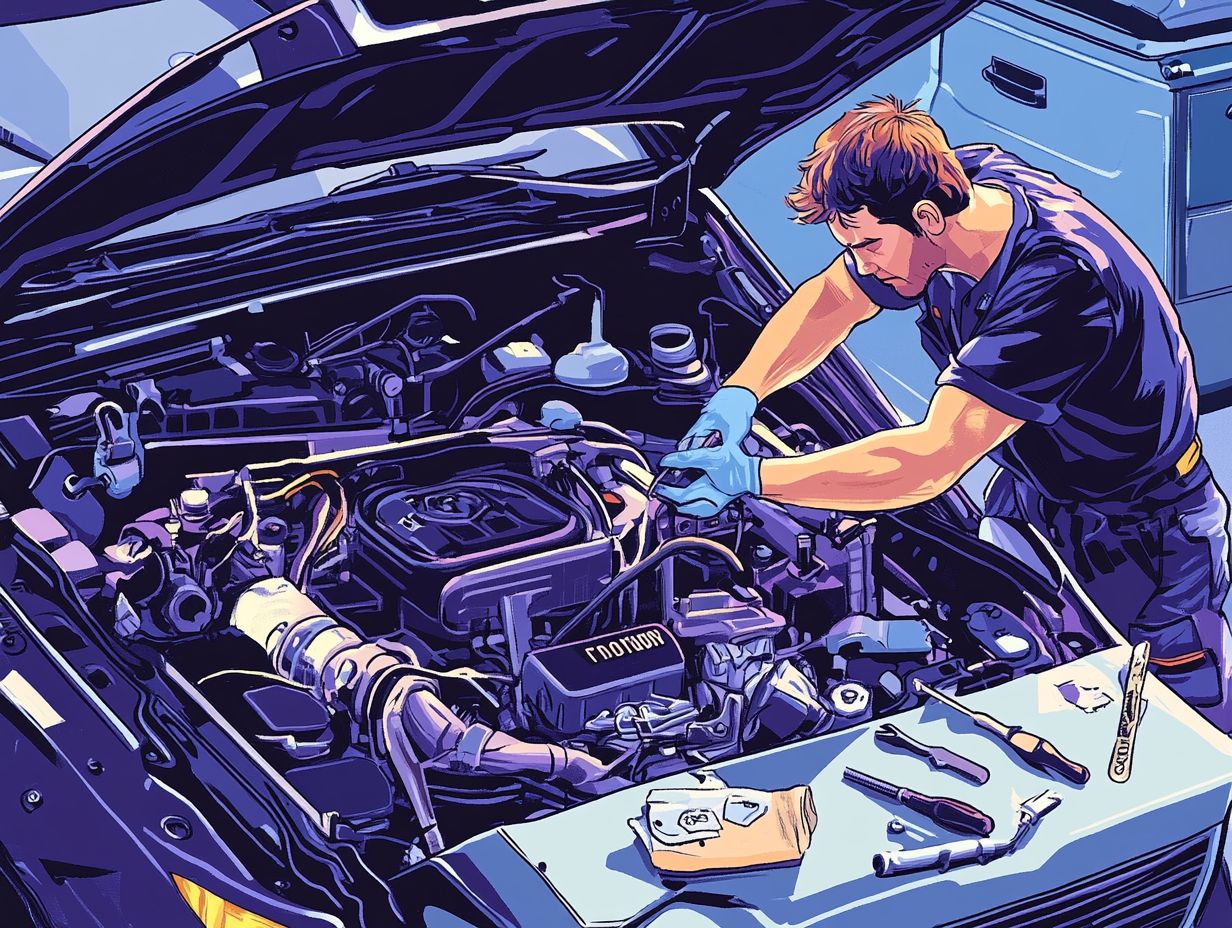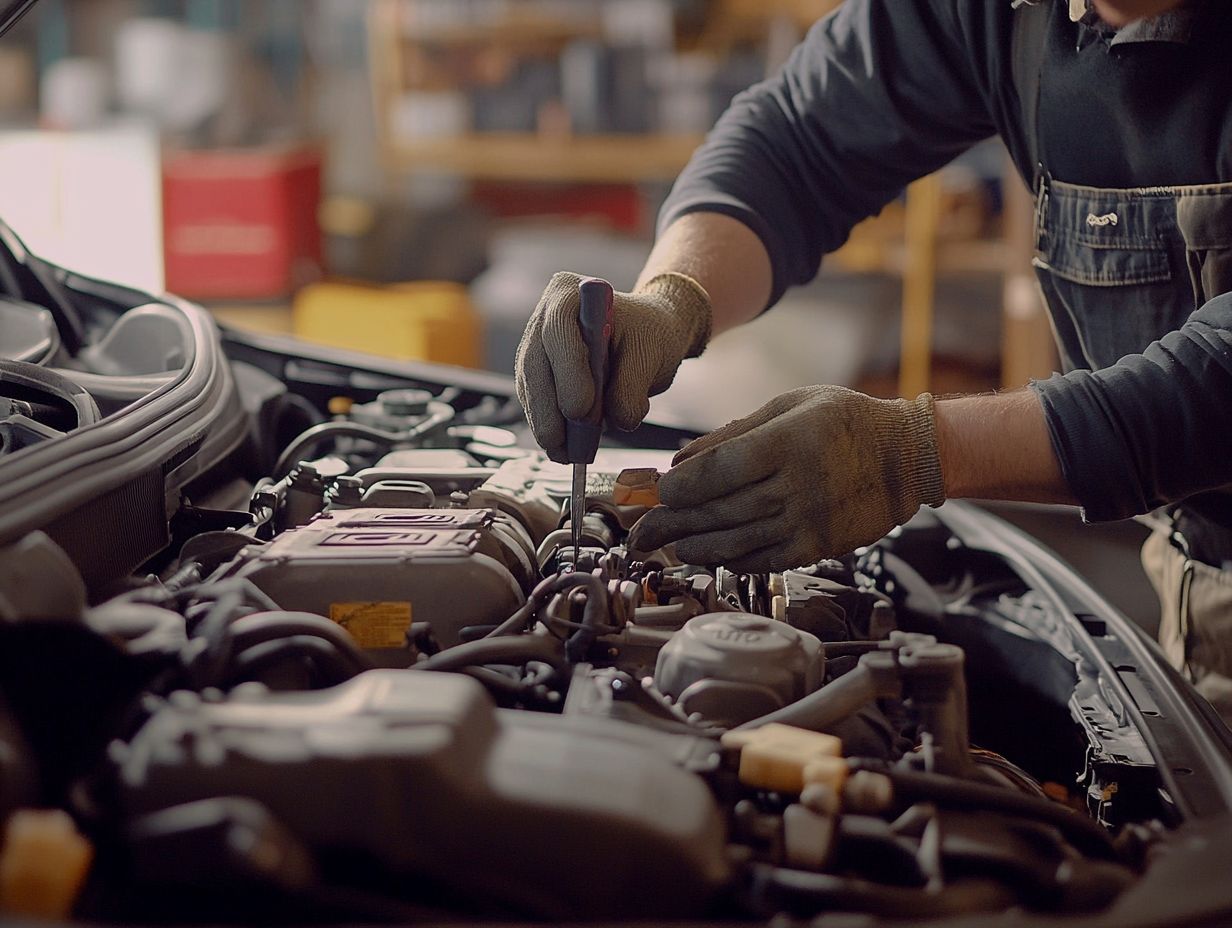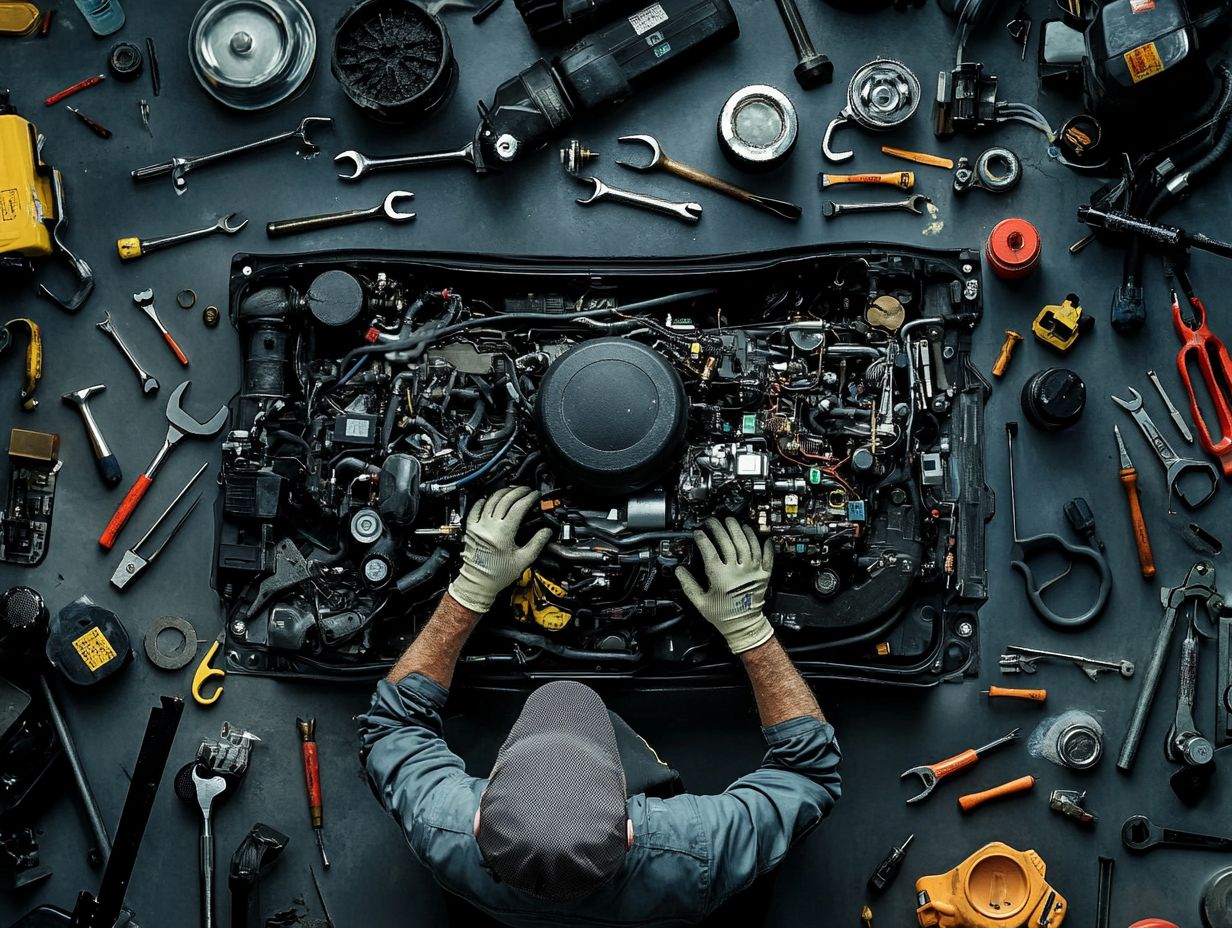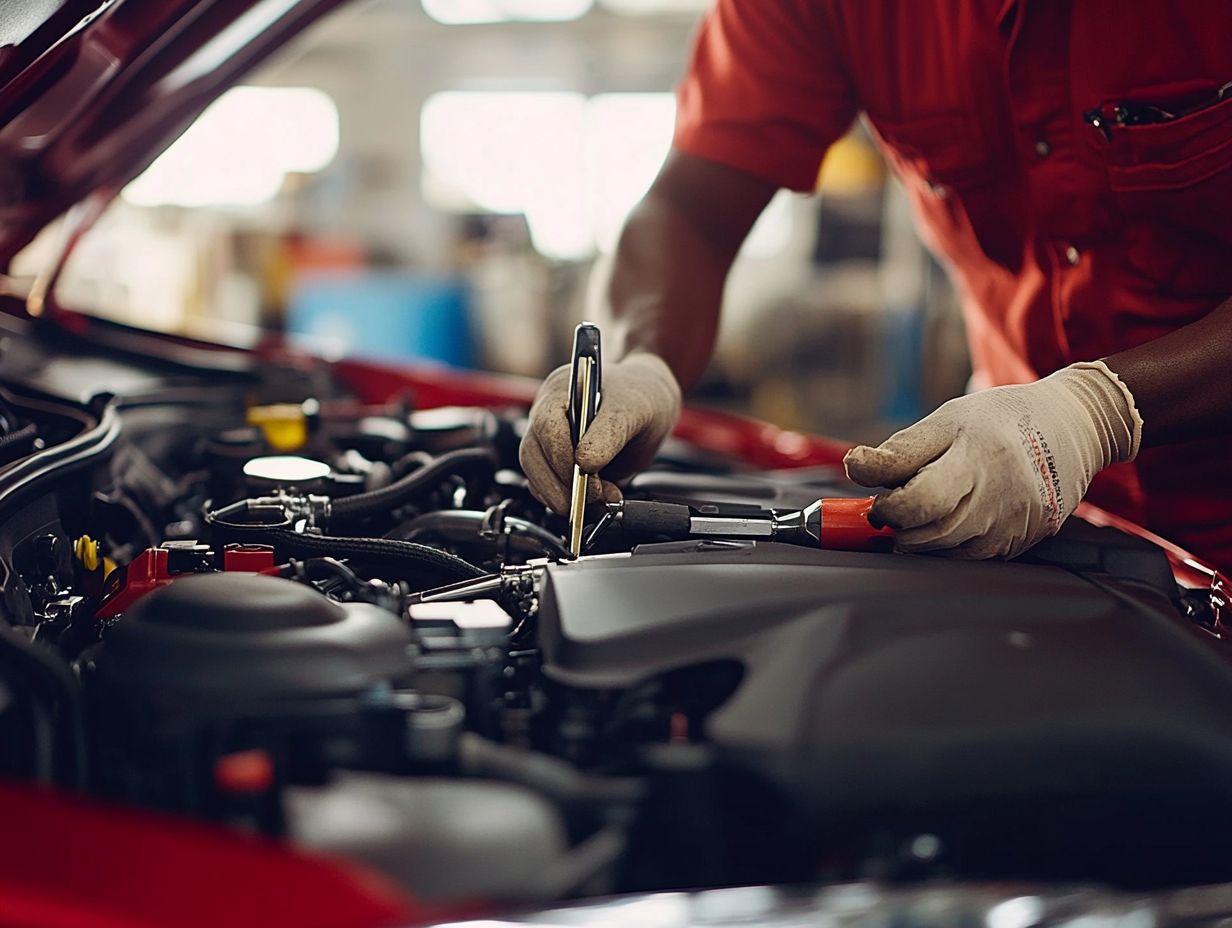Are Toyotas Expensive to Repair?
When I think about the cost of owning a Toyota, I can’t help but wonder about the initial purchase price and the ongoing expenses that come with it.
Sure, Toyotas are famous for their reliability, but it’s crucial to get a handle on maintenance and repair costs so I can budget effectively.
This guide takes a closer look at the financial side of owning a Toyota, covering everything from that initial investment to those common repair expenses that sometimes sneak up on you.
It digs into the factors that can influence these costs, highlights the typical repairs I might encounter, and even shares some handy tips for saving money along the way.
Whether I’m already a proud owner or just thinking about making that purchase, this info will help me make informed decisions about my Toyota journey.
The Cost of Owning a Toyota

Owning a Toyota can be a pretty rewarding experience for me, but I’ve learned that it’s important to think about a few factors that contribute to the overall cost of ownership.
From the initial purchase price to the maintenance expenses, getting a handle on these details really helps me understand what it means to keep a reliable vehicle on the road.
Plus, I’ve noticed that different Toyota models—like the Corolla, Camry, RAV4, and hybrids such as the Prius and Tacoma—can have pretty different operational costs and depreciation rates.
So, let’s dive into the different aspects that shape how affordable and manageable the long-term ownership costs are for these popular rides.
Initial Purchase Price
The initial purchase price of a Toyota is a big deal when figuring out the overall cost of ownership, and it can really vary based on the model and trim level I choose.
This variability comes from all those features that different people might be interested in, like advanced safety tech, fuel efficiency, or some luxurious upgrades. Plus, things like where the dealership is located, market demand, and financing options can really change the final cost.
It’s important to get a grip on these factors because they don’t just impact the purchase price; they also play a role in the vehicle’s resale value and insurance premiums.
I’ve noticed that a well-maintained higher-trim Toyota usually holds its value better, which means lower depreciation. And with relatively low insurance costs, it’s definitely an appealing choice for anyone trying to stick to a budget.
Maintenance and Repair Costs
Maintenance and repair costs for my Toyota can really affect my budget over time, so understanding these expenses is crucial for a worry-free ownership experience.
Average repair costs can vary quite a bit among popular models, and they can change based on things like labor rates and service intervals. For example, some models might require more frequent brake replacements or timing belt adjustments, which can lead to higher long-term expenses. While getting services from a dealership often comes with the perks of specialized expertise and warranty coverage, I’ve noticed that many independent mechanics offer competitive pricing that can save me some cash.
By checking out common repair statistics for my Toyota, I can make smart decisions that help align my budget with the maintenance needs ahead.
Factors that Affect Repair Costs
There are a bunch of factors that can influence the repair costs for my Toyota, and knowing these can really help me make smart choices about maintenance and care.
For starters, the age and mileage of my car can greatly impact how often I need repairs and the average costs I might face. Plus, the specific model I own plays a big part in how much I’ll pay for labor and parts.
For example, older models might need more frequent engine repairs or transmission fluid changes compared to the newer ones. On the flip side, popular models like the Toyota RAV4 and Highlander usually have parts that are easier to find, which can save me some hassle and cash.
Age and Mileage of the Vehicle

The age and mileage of my Toyota really influence how often I need repairs and how much they cost. I’ve noticed that older cars with higher mileage usually need more extensive maintenance.
This is especially the case with common issues like engine repairs and electrical system failures, which seem to pop up more frequently as the car gets older. Research shows that a Toyota with over 100,000 miles is almost twice as likely to need significant repairs compared to newer models.
That’s why I make it a point to stick to regular maintenance. By following a maintenance schedule, I can catch minor issues before they turn into expensive problems. Being proactive not only helps me extend the lifespan of my vehicle but also saves me money in the long run.
Model and Trim Level
The specific model and trim level of my Toyota can really impact repair costs and the availability of parts. I’ve noticed that some models are more prone to certain issues than others.
Take the Corolla, for example. It’s usually known for its reliability, but I’ve found that some trim levels, especially those with advanced features, might need more specialized repairs as they age. On the flip side, the Camry has a solid repair history, but the different engine types can lead to varying maintenance needs.
Then there’s the RAV4. It’s super popular for its versatility, but I’ve seen repair costs vary quite a bit depending on whether I have a basic model or a fully-loaded version packed with tech features.
Understanding that parts availability can change a lot between these models is key. Issues like brake wear or transmission problems can really shape the ownership experience. So, knowing what to expect based on my specific model and trim helps me plan and budget for any future repairs.
Common Repairs for Toyotas
Understanding the common repairs that my Toyota might need really helps me prepare for any potential expenses, so I’m not caught off-guard by repair costs later on.
Whether it’s engine repairs or brake replacements, it’s good to know what the average repair costs are for specific Toyota models. For instance, I’ve noticed that popular models like the Toyota Tacoma and Highlander often face similar issues, such as transmission repairs and electrical problems.
Top Repairs and Average Costs
When I think about the most common repairs for Toyota vehicles, engine issues, brake problems, and transmission repairs definitely come to mind. These often lead to some hefty bills.
For example, engine repairs can set me back anywhere from $1,500 to $4,000, depending on the model and how serious the damage is. Brake repairs usually fall somewhere between $300 and $1,000, which can vary based on how complex the system is and whether I’m using original parts or aftermarket ones.
Then there are transmission repairs, which can also hit the wallet hard, averaging around $2,000 to $3,500. Knowing these costs really helps me budget better.
I’ve learned that opting for high-quality parts can really pay off in the long run, keeping my vehicle running smoothly. And if I’m feeling adventurous, diving into some DIY repairs might save me a good chunk on labor costs while also giving me hands-on experience.
Ways to Save on Toyota Repairs

If I want to save on repairs for my Toyota, there are a bunch of strategies I can try out, like tackling some DIY repairs or finding aftermarket parts.
I’ve found that being hands-on can really cut down on labor costs and help me manage those pesky repair expenses more effectively.
Plus, getting repair estimates from different shops gives me a clearer picture, making it easier to decide where to take my vehicle for service.
DIY Repairs and Maintenance
Engaging in DIY repairs and maintenance is a smart way for me to save on costs and keep my Toyota running smoothly, especially when tackling those common problems.
Using repair manuals really boosts my hands-on experience. They guide me through each step with clear, easy-to-follow instructions. This not only helps me build the skills to fix issues myself but also gives me a deeper understanding of how my vehicle works.
I also make it a point to keep up with regular maintenance tasks like changing the oil, replacing air filters, and checking tire pressure. These simple actions can really extend the life of my Toyota and prevent those unexpected repairs from popping up later.
Taking this proactive approach definitely helps me keep ownership costs down and ensures a more reliable driving experience.
Using Aftermarket Parts
Using aftermarket parts can really save me some cash when I’m servicing my Toyota, but I always make sure these parts are high quality and compatible with my ride.
I totally get why so many owners are drawn to those lower prices for aftermarket options; they can be pretty tempting. But I have to weigh those savings against any potential downsides, like possible drops in performance or even risks to my warranty—since that can really depend on the manufacturer’s policies.
I find that checking out consumer reviews is super helpful, too. It gives me a peek into how these parts hold up in real-life situations, which helps me make smarter choices based on what others have experienced. By looking at both the pros and cons, I can navigate the aftermarket world a lot more effectively.
Overall Cost Comparison to Other Brands
When I think about the overall cost of ownership, comparing Toyota vehicles to other brands really opens my eyes to some important factors like repair costs, insurance rates, and depreciation.
This analysis isn’t just about the initial purchase price; it dives into the long-term financial implications that can really surprise new car buyers. I’ve noticed that, according to recent surveys, Toyota consistently ranks high in reliability. This reliability translates to lower average repair costs, which can save me a good chunk of change over time.
On the flip side, many competitors seem to struggle with higher maintenance expenses that can pile up quickly. I also find that Toyota vehicles tend to have better depreciation rates, meaning they hold their value better than several rival brands. Plus, the generally lower insurance premiums further cement Toyota as a smart choice for anyone looking to keep their expenses in check in today’s economy.
Frequently Asked Questions

Are Toyotas Expensive to Repair?
The cost of repairing a Toyota depends on the specific model, age, and condition of the vehicle. Some Toyotas may be more expensive to repair than others.
What factors contribute to the cost of repairing a Toyota?
The cost of repairing a Toyota can vary depending on the availability and cost of parts, labor rates, and the complexity of the repair. Other factors such as location, warranty coverage, and maintenance history may also impact the cost.
Is it cheaper to repair a Toyota at a dealership or at a local mechanic?
The cost of repairing a Toyota at a dealership may be higher compared to a local mechanic due to the use of OEM (original equipment manufacturer) parts and specialized training. However, a dealership may offer warranties and guarantees for their repairs.
Are there any ways to save money on Toyota repairs?
Yes, regular maintenance and addressing issues before they become bigger problems can help save money on Toyota repairs. Additionally, shopping around for quotes and considering aftermarket or used parts can also help reduce costs.
Do Toyotas have a reputation for being expensive to repair?
In general, Toyotas are known for their reliability and low maintenance costs. However, like any vehicle, they may require more expensive repairs as they age and accumulate more mileage.
Are there any recurring repair issues with Toyotas that may make them more expensive to maintain?
While Toyotas are generally reliable, certain models may have recurring issues that can make them more expensive to maintain. It is important to research and consider the potential repair costs for a specific model before purchasing a Toyota.
